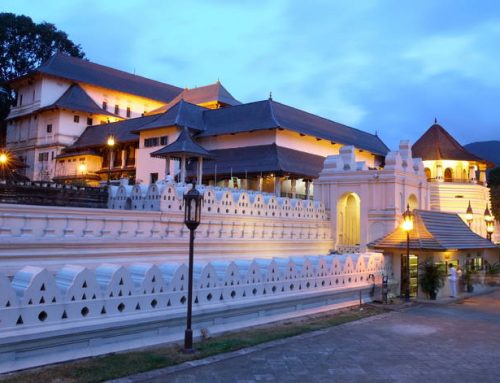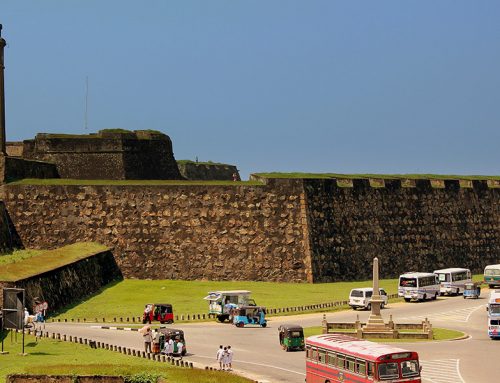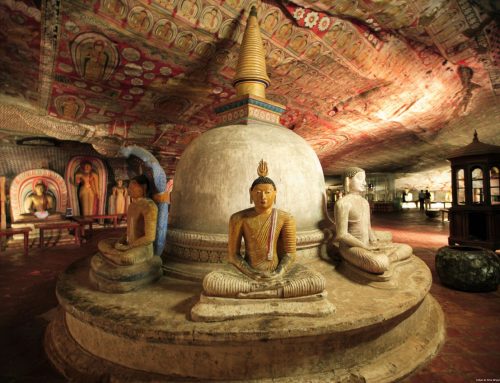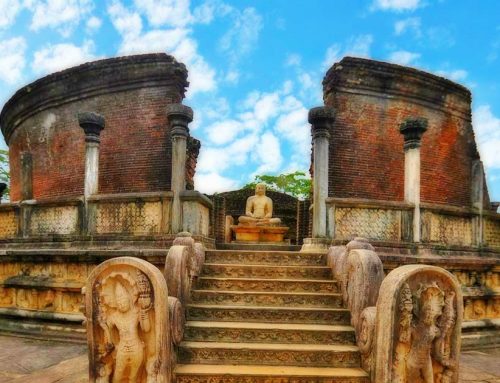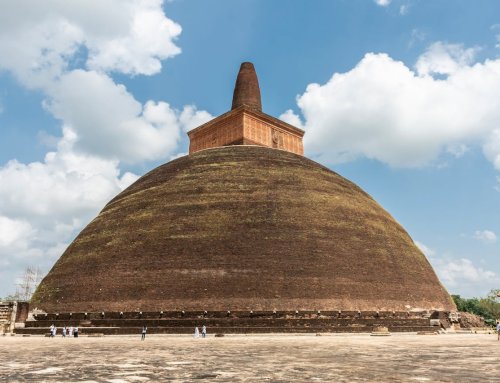The Archeological Wonder of Sri Lankan City Planning, Arts, Gardenscaping, Engineering, Hydraulic Technology and Defense of the 5th Century AD
Sigiriya History
Sigiriya Rock Fortress of Sri Lanka is situated in Matale district near Dambulla. It can be reached along Colombo- Habarana highway by turning towards east from Inamaluwa. Proceeding about 10 km from Inamaluwa and passing Kimbissa township one arrives at Sigiriya.
Before Sigiriya became a Kingdom, Sigiriya Rock base and the places such as Pidurangala which were endowed with many caves and a temple had been dwelled by Buddhist monks from around 3rd Century BC. It is also found that these areas had been inhabitant by people prior to King Kassapa’s rein. Many caves have Brahmi Inscriptions dating back from 3rd Century BC to 1st century AD.
After King Mahanama who ruled Anuradhapura from 410- 432 AD, a prince named Dhatusena became the King of Anuradhapura in 459 AD, defeating the Indian invader ‘Pandu’. King Dhatusena was the ruler who constructed Kala Wewa or the Kala Wewa Tank, by building a dam across Kala Oya , which is a small river type. The man-made 54 mile long Yoda Ela, which takes water from Kala Wewa to Tissa Wewa is considered as an Irrigation engineering wonder even at the present day. It has a gradient of 6 inches per mile along the first 17 miles , which means the level different is just over 8 feet even after the first 17 miles along the canal. During his rein the famous full-relief Aukana Buddha statue was constructed out of a rock which stands 42 feet high.
He had two sons from two of his queens. Mugalan After 18 years, Prince Mugalan came with an army from India to fight with King Kassapa. During the battle Kassapa killed himself thus Mugalan became the King. He went back to Anuradhapura and ruled the country from there and handed over Sigiriya back to the Buddhist priests. Sigiriya as a Kingdom was abandoned in around 1150 AD and was almost forgotten for the next seven centuries Though King Kashyapa is not regarded in high esteem in Sri Lankan history due to his dubious conduct, he is credited as the ruler with unsurpassed imagination put into reality to create a Sri Lankan style marvel of high calibre art and engineering skills that could even challange the otherr world structures at that time, which definitely is amazing even in the 21st century with whatever is remaining as ruins of Sigiriya Kingdom. Landmarks of Sigiriya The Rock itself has its unique identity due to its shape not found anywhere else in the island and can be recognized miles away from the distance. Sigiriya was rediscovered during the rule of the British, by Major H. Forbes in 1831. Climbing to the Sigiriya summit was achieved by A.H.Adams and J.Bailey in 1853. Sigiriya being a fortress, had been well designed for its defenses by having ramparts and moats built around it. There are several approaches to the inner city and the most prominent is the Western entrance. From the summit of the rock, the land areas up to distances of tens of miles can be watched making it hard for the enemy to make a surprise attack to the kingdom. King Kassapa had reverted his fortress to an ecological wonder by having Royal Pleasure Gardens, Water Gardens , Fountain Gardens and Boulder Gardens made inside the inner city as well as at the palace premises on the Rock summit. The most renowned is the Sigiriya Rock Paintings or Frescoes of Sigiri Damsels locally called as ‘ Sigiri Apsaras’ painted on a Western Rock face cavity about 100 meters high from the rock base .There now remains around 21 paintings of Sigiriya Damsels but there had been around five hundred paintings during King Kassapa’s time along several other places of the same Western Rock face. Water Gardens Passing the moat will bring you up to the massive inner rampart which runs parallel to the moat. These ramparts were heavily guarded day and night so penetrating inside was not an easy task during the Rule of King Kassapa. Coming over the rampart brings the splendid view of the Sigiriya Rock at the distance ahead. Also coming into the view is the Royal Pleasure Garden. The Sigiriya Water Garden with a variety of ponds, fountains and remains of structures are unique since water technology that had been used to distribute water in conduits by pressure works even today, when there is enough rain water accumulated in the upper ponds. There are about ninety five pools or ponds found at Sigiriya altogether. The Ancient Monastic Cave Complex and the Rock Boulder Garden Before Sigiriya became a Kingdom, Buddhist monks used the many caves for dwelling, dating back to the 3rd Century BC. Later when King Kassapa’s made Sigiriya his kingdom, these caves were used for other purposes. Some of these caves have paintings done at the same period as the famous Sigiriya Frescoes. These areas which have numerous rock boulders were landscaped to give an appearance of a Rock Boulder Garden during the King’s rein. Audience Hall The Audience Hall is a part of the royal complex constructed on a rock boulder.The surface had been flattened out of the rock and the stone seat has been carved out of the rock boulder. Earlier this had a roof section where the sockets for columns that support the roof structure dug in the rock can be seen. Cobra Hood Cave This is known by the name Cobra Head cave due to the natural shape of the rock itself. This cave had been used as a dwelling place for the Buddhist monks or the Sangha between 3rd and the 1st Centuries BC. The early Brahmi inscriptions indicate that this had been donated by a chieftain ‘Naguliya’ to the Sangha.The painting done on the cave ceiling belongs to the 6-7 th Centuries AD. Stairway to the famous Frescoes The Boulder Arch which is in the ancient pathway to the Sigiriya Rock amply describes the natural landscaping skills on the city planning. The two caves by the sides of the two rocks had been dwelling places for the monks at earlier times.The Terraced gardens in this area formed out of the natural hill had been constructed by making stone retaining walls at various elevations to prevent soil erosion due to rain water.The stairway to the Sigiriya rock runs at a side of the terraced garden. The Sigiriya Frescoes The Sigiriya Paintings are found on about the halfway height of the Sigiriya western rock face, or about 100 meters from the base of the rock. These are found on the rock face cut inside to create a depression about 70 feet lengthwise. A spiral iron staircase takes the visitor about 44 feet from the gallery below and an iron platform runs throughout the length of the frescoed rock depression. There are around 21 paintings in this area and it is believed to be the Fresco-Lustro method used for these paintings. All these paintings are of young and old female figures and there are no two similar figures among them. These figures are popularly called as ‘Sigiri Apsara’ [ Celestial nymphs ] or Sigiri Damsels. The Mirror Wall and Sigiriya Graffiti After King Kassapa’s’ demise, the people who came to see Sigiriya wrote down verses in Sinhala scripts of that time on Sigiriya Damsels and the Sigiriya Lion on the wall running below the Sigiriya frescoes. This wall is called as the ‘ Kedapath Pavura’ or the Sigiriya Mirror Wall. It is done in brick masonry and has a polished plaster finish. Many of these writings on the Mirror Wall belongs to the time period between the 7th and the 11th Centuries AD. some of these had been written by native women indicating the literacy among the females at that time. These graffiti had been written using a metal styles which might had been common among people at that time for writing purposes. The expressions made in the verses are refined and the beauty of the ladies had been much appreciated in a simple literal way. Terrace of the Lion Staircase It is thought, that the name Sigiriya, meaning the Lion Rock must have been derived from the fact that there was a gigantic Lion statue constructed so that the rock resembled a Lion figure. From whatever the original lion statue, only two of its huge paws are remaining now on the Northern side of the rock. A verse written on the Mirror wall in graffiti says that the person who wrote it has seen the Beauties on the Rock and the Lion of Sigiriya. Through the Lion’s paw is the stairway leading to the rock summit . There is a fairly large terrace with the remains of earlier building’s ruins to the northern side to the Lion’s paw entrance. On this terrace, the first accent from the base of the rock terminates. Along the Iron Stairway to the Summit After entering through the lion’s paw entrance begins the second ascend and climbing the old stairway, one finds a few decades old iron ladders and an iron platform with railings to reach the major part up to the summit. These Sigiriya Rock steps are anchored to the Rock surface and the visitor gets a birds eye view on the surrounding areas of the Rock. The final climb is again from an ancient stairway taking the visitor to the uppermost section of the Rock. The Summit where the Palace was On the Summit of the Sigiriya Rock was the Citadel in the 5th Century AD. The terrain on the summit ranges to around 1.5 hectares [ about 3.5 acres ].The layout of the palace and the landscaped gardens on several terraces can be seen on the summit. It is said to be that the palace constructions must have mainly done out of timber unlike in other ancient places where the doorways etc. were made out of granite. A large pool of the dimensions 90 feet x 68 feet made by cutting out the rock . There are also few smaller ponds made using brick. The foundations of earlier buildings are still intact so the complete plan of the palace can be seen even today. The Descend and the aerial views These fascinating views were able to capture during the descend from the rock summit. The people who worked on this rock surface at this height cutting the rock and building structures in earlier times must have been superior with engineering skills and also would not have been faint hearted indeed . The Western Rock face and features Coming down from the Lion’s paw terrace, takes you down to the rock base through a separate route starting from the end of the Mirror Wall passage.The depression of the rock where the frescoes are and the outside of the mirror wall can be seen with details here. The Landscaped Terrace at the Rock Bottom The terraced garden is accessed at last and the natural surrounding with rock boulders and caves are found in the return journey. There are several caves , which have ceiling paintings done at the rock base.


